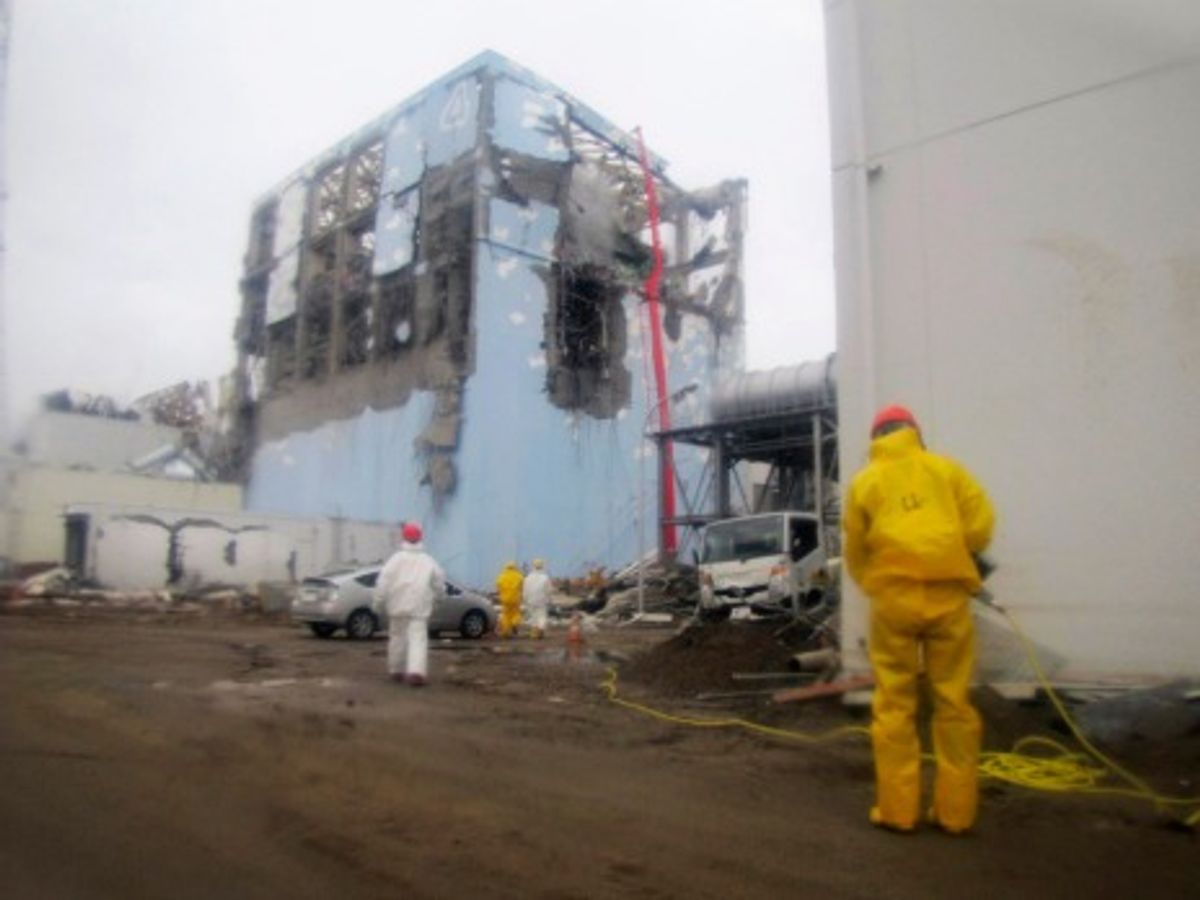Editor's Note: John Boyd is an IEEE Spectrum contributor reporting from Kawasaki, Japan. This is part of IEEE Spectrum's ongoing coverage of Japan's earthquake and nuclear emergency. For more details on how Fukushima Dai-1's nuclear reactors work and what has gone wrong so far, see our explainer and our timeline.
Lights were switched on in the central control room for the No. 3 reactor of the earthquake-hit Fukushima Dai-1 nuclear power plant on Tuesday night, and some instruments were in operation. With the No. 3 building successfully reconnected to the electricity grid, operators will now work on getting the building's cooling system back in action. Tokyo Electric Power Company (TEPCO) is working to reconnect the plant's other five buildings to the grid as well, which would be a major step towards stabilizing the plant and ending the immediate crisis.
But the good news was dampened with the announcement that Japan’s death toll from the earthquake and tsunami that struck on March 11 had passed 9,000, with 14,000 people still unaccounted for. Also, two British newspapers have reported that Japanese authorities knew about major safety problems at Fukushima Dai-1 for some time before the earthquake and tsunami.
Tokyo Electric Power Company (TEPCO) told reporters that it had lights back on in the central control room for the No. 3 reactors at 10:43 on Tuesday night. An official added that temperature gauges for reactors No. 1 and No. 3 indicated surface temperatures were considerably higher than normal: The temperature of the No. 1 reactor on Tuesday was 394 degrees Celsius. The official said workers had doubled the amount of seawater they were using to cool the reactor. Hidehiko Nishiyama, deputy director general of Japan's Nuclear and Industrial Safety Agency, said the reactor was designed to withstand temperatures of up to 300 degrees Celsius. An later bulletin said the temperature was starting to come down.
In a press conference for the foreign press Tuesday evening in Tokyo, Nishiyama gave an update on the other nuclear power plants that were impacted by the earthquake and tsunami that hit northeast Japan. Four reactor units of the Fukushima Dai-2 nuclear plant, one unit of the Tokai Dai-2 nuclear plant, and one unit of the Onagawa nuclear plant were impacted, but none experienced severe problems.
“All of these units were shut down because of the earthquake,” said Nishiyama. “But they all have power supplied from outside and were shut down in a stable manner, what we call a cold shutdown.”
Nishiyama added that before they could be returned to service, the integrity of the equipment first had to be ascertained. If the soundness of the equipment was confirmed, it would then be necessary to consider how the reactors could be restarted taking into account that more large earthquakes could occur. “We would also have to gain the acceptance of the residents in the surrounding areas as well,” said Nishiyama. “So I’m not able to say when we can put these plants back into service.”
NHK, Japan’s national broadcaster, reported that TEPCO expects the ongoing rolling power cuts to end in early May as the weather warms up. But TEPCO said that when heavy use of air conditioners increases with the rise of summer temperatures, it will have to reintroduce the blackouts. TEPCO estimates that there will be a supply gap of around 10 megawatts during that time.
Work at the crippled Fukushima Dai-1 plant continues to be interrupted by worrisome emissions. In a preliminary press briefing at 4:30 p.m. on Wednesday (local time) a TEPCO official said “black steam” had been seen rising from the No. 3 reactor building at 4:20 p.m. He said the workers had been withdrawn as a safety precaution. He had no other details available at that time. Black smoke from the same reactor building was also seen pluming into the sky on Monday, which brought work crews to a halt, but that smoke later turned white and subsided. NHK said TEPCO announced at 5:30 on Wednesday (local time) that the smoke was subsiding and that no rise in radiation had been observed in and around the plant.
NHK also reported TEPCO saying that the tsunami that hit the plant was more than 14 meters high, twice as high as the plant was prepared for.
Meanwhile, the criticisms of Japan's nuclear industry continue to mount. A British newspaper, The Telegraph, published a story last week alleging Japan was putting costs before safety concerns and that an official from the International Atomic Agency (IAEA) had warned Japan in December 2008 that strong earthquakes would pose a “serious problem” because nuclear power plant safety rules were out of date. The paper said that the Japanese government promised to upgrade its plants, but it was not known how extensive its efforts were. The paper based its article on U.S. government cables obtained by the WikiLeaks website.
A second British newspaper, The Guardian,raised allegations yesterday that spent fuel storage pools in the Dai-1 plant were over-full, creating a dangerous situation. The paper wrote that the plant was storing “far more fuel rods than it was designed to store, while its technicians repeatedly failed to carry out mandatory safety checks.” The newspaper says the charges are based on TEPCO’s own documents and “a presentation TEPCO gave to the International Atomic Energy Agency and later posted on the company’s website.”
PHOTO: TEPCO/Reuters





